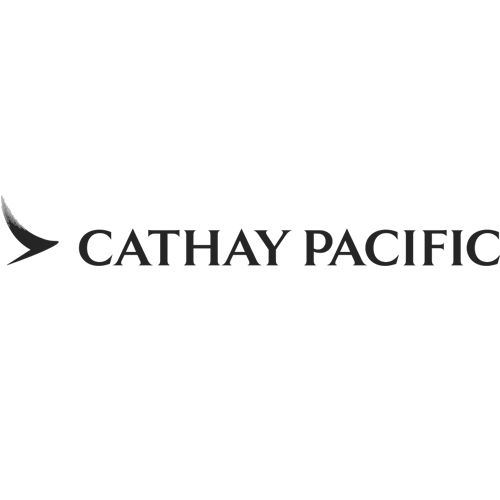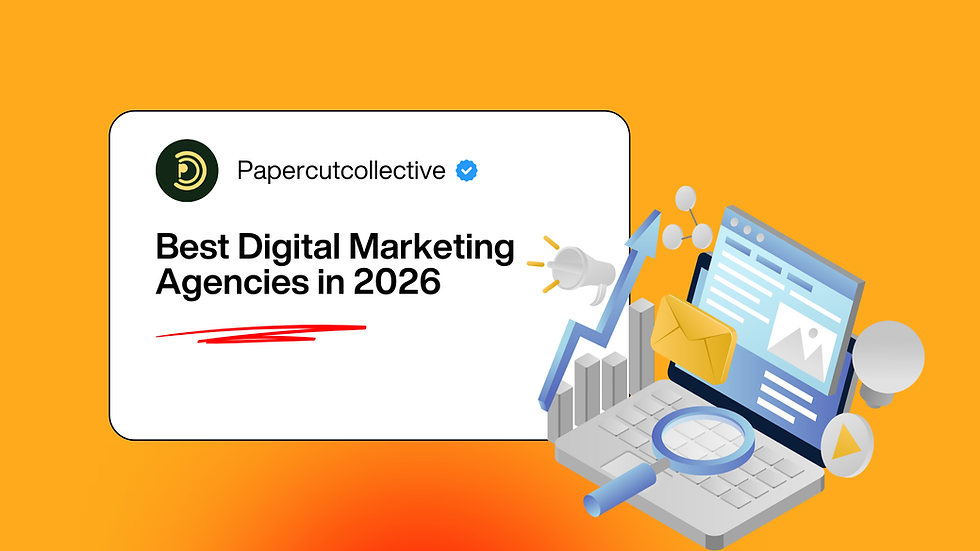How a Singapore Business Scaled Fast
- Tsamarah Balqis
- May 19
- 5 min read
Updated: Nov 25
Scaling a business in Singapore is no small feat. In a fast-paced, competitive market, brands must continuously innovate and stay ahead of the curve. But how do some businesses manage to scale faster than others?
The answer lies in strategic digital marketing, data-driven decisions, and leveraging an effective online presence. In this article, we’ll explore how one Singapore business achieved rapid growth and how you can apply similar strategies to your brand.

1. Identifying the Growth Opportunity
Before diving into marketing tactics, successful businesses start by identifying growth opportunities. This involves thorough market research to understand customer needs, pain points, and competitor strategies.
Conducting Market Research
A Singapore-based retail startup, for instance, noticed a rising trend in sustainable fashion. By studying local consumer behavior and global sustainability movements, they pinpointed a niche opportunity. They focused on creating eco-friendly, stylish apparel that resonated with environmentally conscious consumers.
Recognizing Customer Needs
Understanding customer pain points was key. They identified that many sustainable fashion options were either too expensive or lacked modern appeal. Their solution? Affordable, stylish, and sustainable pieces that fit the lifestyle of young urban professionals.
2. Building a Strong Online Presence
Once the growth opportunity was clear, the next step was to establish a solid online presence. Digital marketing became the backbone of their growth strategy.
Optimizing the Website for Visibility
To attract organic traffic, the brand invested in SEO services singapore, ensuring that their website ranked high on search engine results for keywords like “sustainable fashion Singapore” and “eco-friendly clothing.” This meant optimizing meta tags, producing blog content about sustainable living, and improving site speed for better user experience.
Paid Advertising
They also launched PPC campaigns targeting high-intent keywords, such as “buy eco-friendly fashion Singapore.” These ads not only drove traffic but also attracted leads who were already searching for sustainable fashion solutions.
Social Media Marketing
Through platforms like Instagram and Facebook, the brand shared stories of how their clothes were made, emphasizing sustainability. Interactive content such as behind-the-scenes videos and eco-friendly fashion tips created a community of engaged followers.
3. Social Media for Brand Awareness
Social media played a crucial role in scaling their brand presence. They adopted a multi-channel strategy, focusing on platforms that aligned with their audience demographics, including Facebook, Instagram, TikTok, and LinkedIn. By strategically utilizing each platform’s strengths, they maximized engagement and reached a diverse audience.
Engaging Content Strategy
The brand made a significant effort to create content that resonated with their target audience. They focused on three main content types:
Educational Content:
The brand regularly posted tips on sustainable fashion, including how to style eco-friendly pieces and extend garment life through proper care.
They created infographics explaining the environmental benefits of choosing sustainable materials over conventional fabrics.
Short videos demonstrating how their products were made, emphasizing ethical production processes, were particularly well-received.
Storytelling and Brand Values:
They shared behind-the-scenes footage of the production process, from design to final product.
Success stories from customers who embraced sustainable fashion were highlighted, reinforcing a sense of community.
The brand founders also shared their personal journey into sustainable fashion, adding a human touch.
Interactive Content:
Polls and quizzes, such as "Guess the sustainable material," engaged followers and encouraged interaction.
User-generated content was celebrated, featuring customers showcasing their purchases and sharing styling ideas.
Live Q&A sessions with the brand founders and fashion experts were conducted to discuss sustainability challenges and fashion tips.
By creating diverse and engaging content, the brand kept their followers interested while continuously educating them about sustainability. This consistent interaction built a strong and loyal online community.
Running Targeted Campaigns
Social media campaigns were essential for driving sales and brand recognition. The brand executed the following targeted campaigns:
Seasonal Campaigns:
During key shopping periods like Earth Day and National Recycling Week, they launched themed collections.
Campaigns like “Shop Sustainably This Summer” encouraged eco-friendly choices, offering discounts on eco-essentials.
Product Launch Campaigns:
New collections were announced with teaser videos and countdown stories, creating anticipation.
Product posts were optimized with rich descriptions, styled looks, and interactive carousels to showcase versatility.
Influencer and Ambassador Collaborations:
The brand collaborated with local eco-influencers who aligned with their values. These influencers created authentic content that demonstrated how the brand’s fashion pieces fit seamlessly into a sustainable lifestyle.
Brand ambassadors hosted Instagram takeovers, sharing their personal sustainability journeys and styling tips using the brand’s products.
User-Generated Content Campaigns:
The #WearGreenChallenge encouraged followers to post their eco-friendly outfits, tagging the brand for a chance to be featured.
Customers who shared their styling ideas received shoutouts, boosting engagement and fostering a sense of community ownership.
Paid Advertising Campaigns:
The brand invested in Facebook advertising agency singapore targeting eco-conscious consumers aged 18-35 in Singapore.
Carousel ads showcasing different outfits generated high engagement, while video ads narrated the brand’s commitment to sustainability.
Retargeting campaigns reminded past visitors to complete their purchases, leading to a 20% increase in conversion rates.
Data-Driven Social Media Optimization
The brand didn’t just stop at creating content and launching campaigns. They closely monitored performance metrics to continuously optimize their strategy:
Engagement Tracking:
Using tools like Facebook Insights and Instagram Analytics, they tracked likes, shares, comments, and story interactions.
Content that sparked high engagement, such as styling videos, was prioritized in future campaigns.
Audience Analysis:
Demographic breakdowns revealed that younger audiences preferred short videos, while older followers engaged more with in-depth posts.
Adjustments were made to balance content formats based on age groups and platform preferences.
A/B Testing:
The brand experimented with different ad creatives, testing whether lifestyle photos or product shots performed better.
Variations in ad copy and CTA placement helped fine-tune messaging for higher click-through rates.
By continuously refining their social media agency strategy based on data and audience feedback, the brand maintained high engagement levels while steadily increasing its follower count.
Success Story:
One campaign featuring a local sustainability advocate generated over 1,000 new followers and resulted in a 30% increase in website traffic in just one week.
4. Data-Driven Decision Making
No successful scaling strategy works without data. The brand continuously tracked its marketing performance to identify what worked and what didn’t.
Performance Tracking
Using tools like Google Analytics, they monitored website traffic, user behavior, and conversion rates. Social media insights revealed which content formats drove the most engagement.
A/B Testing
They experimented with different ad creatives and landing page designs. One A/B test revealed that ads with user-generated content performed 20% better than product-only visuals. This insight led to a shift towards customer-centric storytelling in their ads.
Data-Backed Improvements
After analyzing data, they made adjustments to their marketing strategy. For instance, they increased ad spend on high-performing campaigns while phasing out less effective ones.
5. Collaboration and Strategic Partnerships
Strategic partnerships gave their brand a broader reach and stronger credibility. By teaming up with complementary businesses, they tapped into new audiences without doubling marketing costs.
Local Partnerships
They partnered with eco-friendly cafes and lifestyle stores to cross-promote each other. This created community buzz and offered customers bundled deals, combining fashion and lifestyle products.
Influencer Collaborations
To expand their digital footprint, they worked with micro-influencers who shared the brand's commitment to sustainability. This approach not only boosted brand authenticity but also increased social proof.
Final Thoughts: Scaling Your Business with the Right Strategy
Rapid scaling doesn’t happen overnight. It requires a well-thought-out strategy, consistent effort, and the right marketing approach. By focusing on market research, building a strong online presence, leveraging social media agency sg, making data-driven decisions, and collaborating strategically, this Singapore business successfully scaled its operations.
Want to see your business scale fast? Contact Paper Cut Collective today for tailored digital marketing strategies that deliver results.

.png)
.png)
.png)



























.jpg)